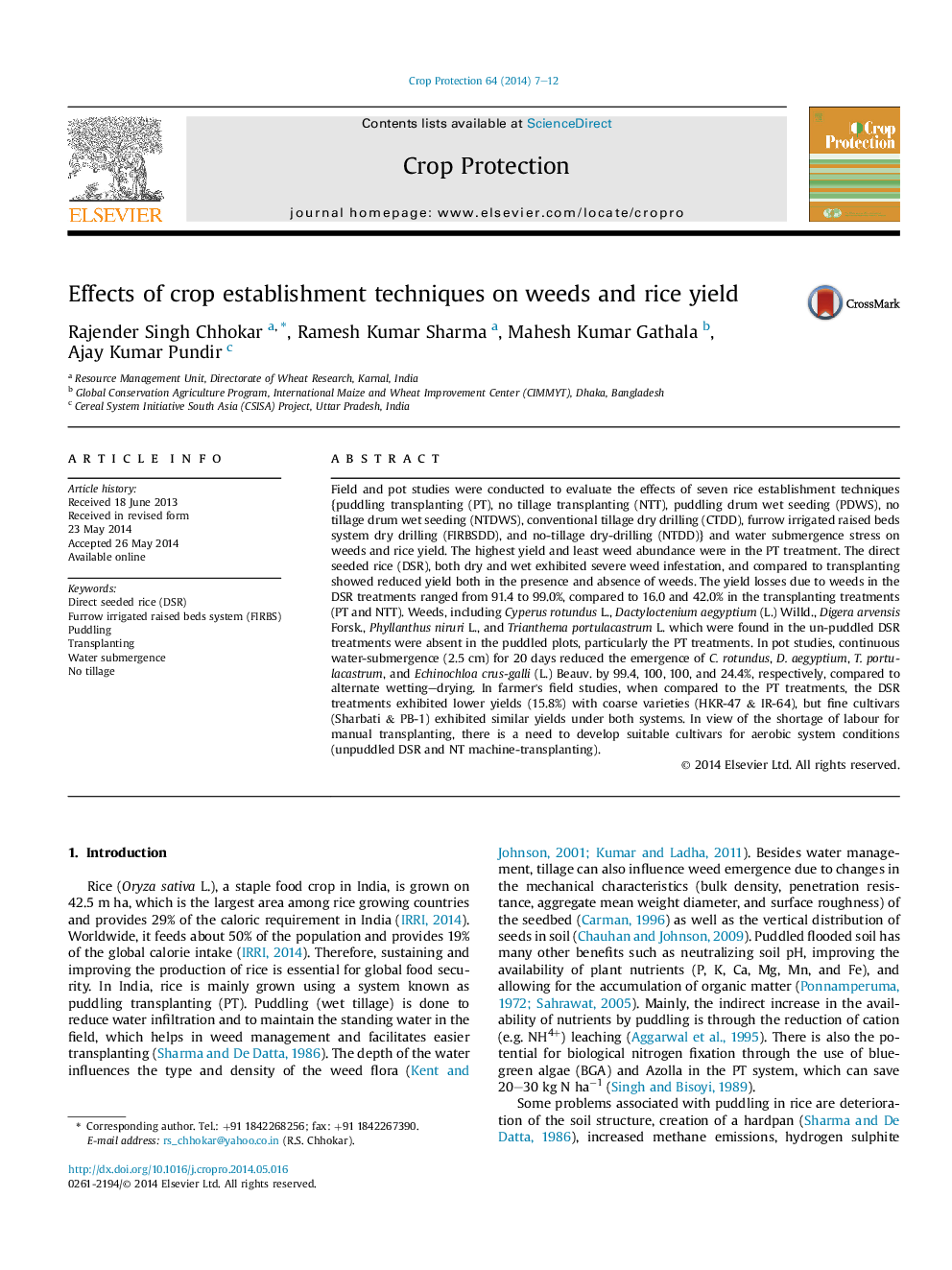| Article ID | Journal | Published Year | Pages | File Type |
|---|---|---|---|---|
| 6373642 | Crop Protection | 2014 | 6 Pages |
Abstract
Field and pot studies were conducted to evaluate the effects of seven rice establishment techniques {puddling transplanting (PT), no tillage transplanting (NTT), puddling drum wet seeding (PDWS), no tillage drum wet seeding (NTDWS), conventional tillage dry drilling (CTDD), furrow irrigated raised beds system dry drilling (FIRBSDD), and no-tillage dry-drilling (NTDD)} and water submergence stress on weeds and rice yield. The highest yield and least weed abundance were in the PT treatment. The direct seeded rice (DSR), both dry and wet exhibited severe weed infestation, and compared to transplanting showed reduced yield both in the presence and absence of weeds. The yield losses due to weeds in the DSR treatments ranged from 91.4 to 99.0%, compared to 16.0 and 42.0% in the transplanting treatments (PT and NTT). Weeds, including Cyperus rotundus L., Dactyloctenium aegyptium (L.) Willd., Digera arvensis Forsk., Phyllanthus niruri L., and Trianthema portulacastrum L. which were found in the un-puddled DSR treatments were absent in the puddled plots, particularly the PT treatments. In pot studies, continuous water-submergence (2.5Â cm) for 20 days reduced the emergence of C. rotundus, D. aegyptium, T. portulacastrum, and Echinochloa crus-galli (L.) Beauv. by 99.4, 100, 100, and 24.4%, respectively, compared to alternate wetting-drying. In farmer's field studies, when compared to the PT treatments, the DSR treatments exhibited lower yields (15.8%) with coarse varieties (HKR-47 & IR-64), but fine cultivars (Sharbati & PB-1) exhibited similar yields under both systems. In view of the shortage of labour for manual transplanting, there is a need to develop suitable cultivars for aerobic system conditions (unpuddled DSR and NT machine-transplanting).
Keywords
Related Topics
Life Sciences
Agricultural and Biological Sciences
Agronomy and Crop Science
Authors
Rajender Singh Chhokar, Ramesh Kumar Sharma, Mahesh Kumar Gathala, Ajay Kumar Pundir,
